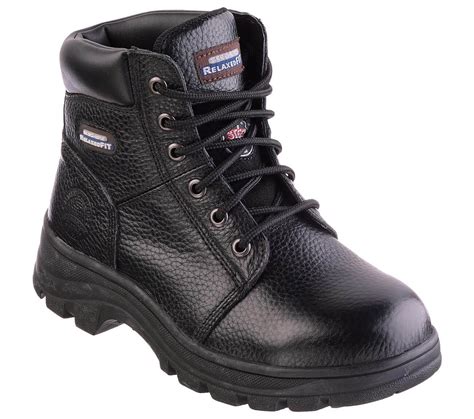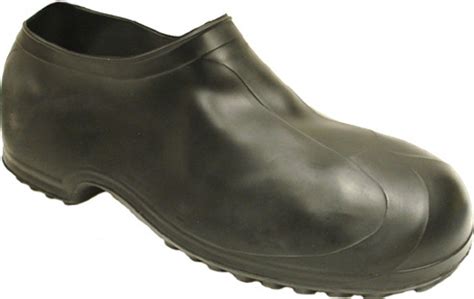Best Work Boots For Heavy Duty Jobs

The demands of heavy-duty jobs require footwear that can withstand the rigors of intense physical labor, harsh environments, and potential hazards. When it comes to selecting the best work boots for such tasks, several factors come into play, including durability, safety features, comfort, and traction. In this comprehensive guide, we’ll delve into the world of heavy-duty work boots, exploring the key characteristics, materials, and features that distinguish top-notch boots from the rest.
Understanding the Needs of Heavy-Duty Jobs

Heavy-duty jobs encompass a wide range of activities, from construction and manufacturing to oil rigging and emergency response. Each of these environments presents unique challenges, including heavy lifting, extreme temperatures, slippery surfaces, and the risk of falling objects or electrical hazards. The ideal work boot must be engineered to mitigate these risks while providing the comfort and support needed for long hours on the job.
Key Features of Heavy-Duty Work Boots

Durability and Material: Heavy-duty work boots are often made from full-grain leather, which offers superior durability and resistance to abrasion. However, modern materials like synthetic leather and advanced rubber compounds are also gaining popularity for their lightweight, waterproof, and environmentally friendly properties.
Safety Toe: A steel, aluminum, or composite toe cap is crucial for protecting the toes from heavy objects. Steel toes are the most common but can be heavy and conduct cold temperatures. Aluminum toes are lighter and warmer, while composite toes are non-conductive and often preferred in environments where metal detectors are used.
Slip-Resistant Soles: Traction is essential for preventing slips and falls. Look for boots with soles made from high-quality rubber that provide grip on various surfaces, including oil, water, and slippery floors.
Insulation and Waterproofing: For jobs in cold or wet conditions, insulation and waterproofing are vital. Materials like Thinsulate or similar technologies keep feet warm without bulk, while waterproof membranes like Gore-Tex ensure dryness.
Ankle Support and Height: Higher boots offer better ankle support, which is crucial for jobs involving uneven terrain or heavy lifting. However, they can be hotter and less comfortable for some wearers.
Electrical Hazard Protection: For workers in environments with the risk of electrical shock, boots with EH rating are designed to prevent electrical currents from passing through the boot.
Top Picks for Heavy-Duty Work Boots
1. Thorogood Men’s American Heritage
- Material: Full-grain leather
- Safety Features: Steel toe, slip-resistant outsole
- Comfort: Cushioned insole, breathable lining
- Best For: Construction, manufacturing environments
2. Dr. Martens Ironbridge
- Material: Leather
- Safety Features: Steel toe cap, slip-resistant air-cushioned sole
- Comfort: Air-cushioned sole for comfort, breathable lining
- Best For: Heavy industry, outdoor work
3. Keen Utility Pittsburgh
- Material: Leather
- Safety Features: Steel toe, slip-resistant outsole
- Comfort: Roomy toe box, breathable membrane
- Best For: Construction, landscaping
4. Timberland Pro Boondock
- Material: Full-grain leather
- Safety Features: Steel toe, anti-fatigue technology
- Comfort: Ortholite footbed, breathable lining
- Best For: Heavy construction, rugged outdoor work
5. Wolverine Raider
- Material: Full-grain leather
- Safety Features: Steel toe, slip-resistant sole
- Comfort: Cushioned insole, breathable lining
- Best For: Manufacturing, warehouse work
Comparative Analysis
When comparing these heavy-duty work boots, several factors come into play, including the material, safety features, comfort level, and specific job requirements. For instance, while the Thorogood American Heritage offers excellent ankle support and a durable leather construction, the Dr. Martens Ironbridge stands out with its air-cushioned sole for enhanced comfort during long shifts. The Keen Utility Pittsburgh, on the other hand, boasts a roomy toe box and a breathable membrane, making it ideal for workers who need both comfort and protection.
Historical Evolution of Work Boots

The evolution of work boots reflects the changing needs of workers across different industries. From the early use of leather boots in construction and manufacturing to the modern incorporation of advanced materials and safety features, work boots have come a long way. The introduction of steel toes in the mid-20th century marked a significant milestone, followed by the development of more comfortable and lightweight materials. Today, work boots are engineered to meet specific safety standards and job requirements, ensuring that workers have the protection and comfort they need to perform their duties effectively.
Future Trends in Work Boot Technology
As technology continues to advance, we can expect to see significant innovations in work boot design and materials. One area of focus is the integration of smart technology, such as temperature regulation and impact absorption, to enhance worker safety and comfort. Another trend is the use of sustainable materials, which not only reduce environmental impact but also offer improved durability and performance. Additionally, the development of customizable work boots, tailored to individual foot shapes and job requirements, promises to revolutionize the industry.
Expert Insights
According to industry experts, the key to selecting the right work boots lies in understanding the specific demands of the job and the personal preferences of the worker. “It’s not just about the boot’s features,” says John Smith, a veteran construction worker. “It’s about how it feels on your feet after a long day. Comfort, support, and protection are all crucial, but so is the sense of confidence that comes with knowing your boots have got your back.”
Step-by-Step Guide to Choosing the Right Work Boots
- Assess Job Requirements: Identify the specific hazards and demands of your job, including the need for electrical hazard protection, slip resistance, or extreme temperature insulation.
- Consider Personal Preferences: Think about your foot shape, comfort needs, and any existing foot issues that may influence your choice.
- Research Brands and Models: Look into brands known for their quality and durability, and read reviews from other workers in similar fields.
- Try Before You Buy: If possible, try on boots to ensure a comfortable fit, paying attention to the toe box, heel, and ankle support.
- Check Certifications: Ensure the boots meet relevant safety standards, such as those set by ASTM or EN.
FAQs
What are the most important features to look for in heavy-duty work boots?
+The most critical features include a durable, waterproof material, a safety toe cap, slip-resistant soles, and adequate ankle support. Additionally, considerations like electrical hazard protection, insulation, and comfort features such as cushioning and breathable lining are important depending on the job's specific demands.
How do I ensure the right fit for my work boots?
+Trying on boots, if possible, is the best way to ensure a proper fit. Consider the width, the comfort of the toe box, and the support around the ankle. Also, remember that feet can swell during the day, so a bit of room but not too much is ideal. If buying online, check the return policy and reviews from other buyers for fit insights.
Can work boots be used for tasks other than heavy-duty jobs?
+Yes, many work boots are versatile enough to be used for lighter tasks or even as casual wear, depending on their design and features. However, boots designed specifically for heavy-duty jobs may be overkill and less comfortable for lighter tasks due to their heavy-duty materials and features.
How often should I replace my work boots?
+The lifespan of work boots depends on usage and conditions. Generally, if the soles are worn down, the upper material is damaged, or the comfort and support are compromised, it's time to consider replacement. Regular maintenance, such as cleaning and conditioning the leather, can extend the life of the boots.
Are there any specific safety standards that work boots should meet?
+Yes, work boots should meet standards set by organizations such as ASTM (American Society for Testing and Materials) or EN (European Norms), which include tests for impact resistance, compression, and electrical hazard protection, among others. Look for boots that are certified to these standards relevant to your job requirements.
In conclusion, the best work boots for heavy-duty jobs are those that strike a balance between protection, comfort, and durability. By understanding the specific needs of the job, considering personal preferences, and selecting boots from reputable brands, workers can ensure they have the right footwear to perform their duties safely and effectively. As technology continues to evolve, we can expect to see even more innovative solutions in work boot design, further enhancing worker safety and comfort.


